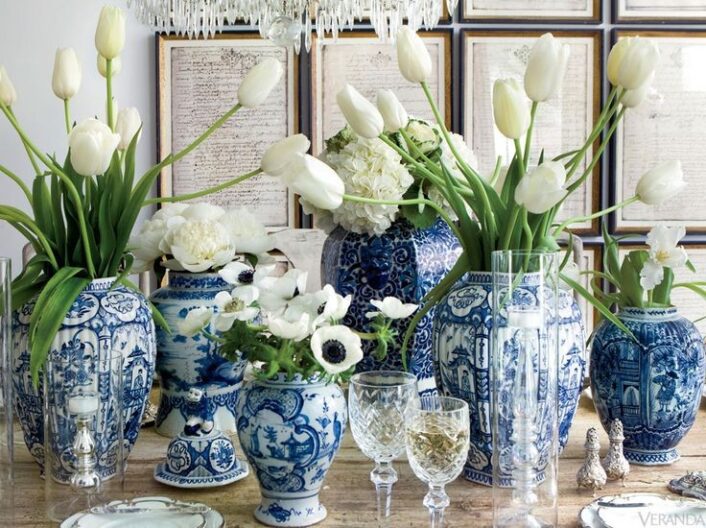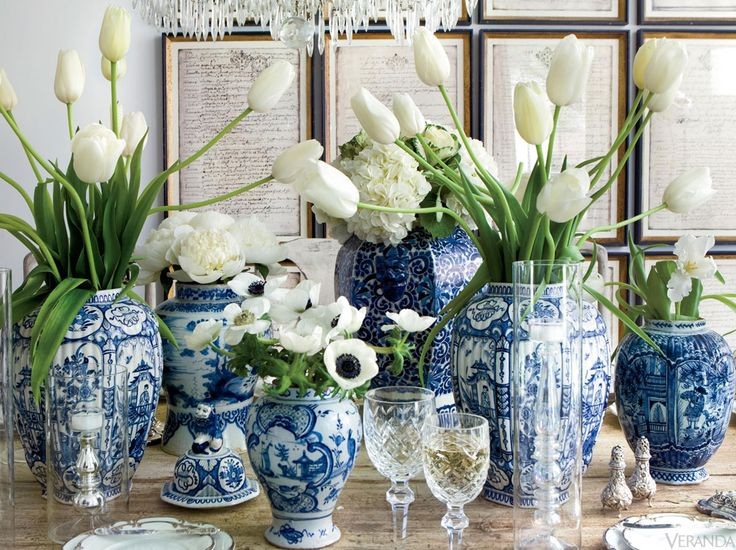
A lovely blue and white porcelain display by Lisa Luby Ryan.
Image courtesy of Veranda
We love nothing more than to set a blue & white tablescape. There are so many wonderful antique and contemporary options available today to mix and match, and all reference back to a rich history of porcelain that originates in China as early as the ninth century. To follow, a few key dates to illustrate the evolution of this tradition:
- In the early 14th century, mass production of fine, translucent blue and white china started in Jingdezhen, still the porcelain center of China today, as a combination of cobalt from Persia with the translucent white of Chinese porcelain. Some designs bore an Islamic influence, and fell out of favor by the Court for this reason.
- During the 17th century, blue and white porcelain was made for export, and European symbols began to co-exist with Chinese scenes.
- The provenance of Delftware can be traced back to the foundation of the Dutch East India Company in 1602, at which time Chinese ‘Kraak’ porcelain flooded into Holland, making a great impression. Dutch potters began replicating the intricate blue patterned designs, catching the attention of European aristocrats and royalty, specifically with the reign of William and Mary in England c. 1689, and with Cosimo III of the Medici c. 1660.
- Delft pottery also became a popular import to America from Europe during the colonial period, and today is a relic of early American history. Today’s most valuable, from a monetary standpoint, is Delftware c. 1750 and prior. Delft is still made today in the Netherlands, although mainly mass-produced for tourists.
Enjoy some of our favorite antique and contemporary patterns!
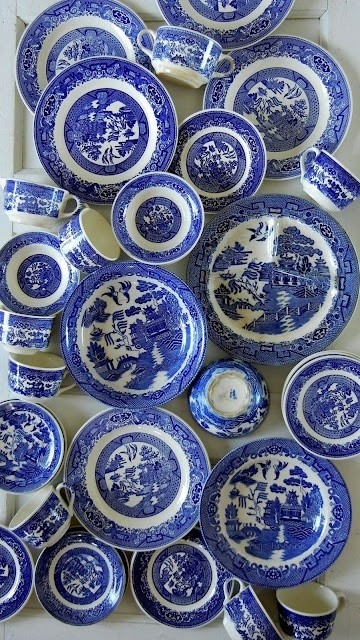
A fine collection of Blue Willow transferware
Image courtesy: As Gold as it Gets
Blue Willow china is the illustration of an ancient Chinese legend; each component of the design tells part of the poignant story of true love. The blue willow pattern was designed by Thomas Turner and engraved by Thomas Minton in 1780. Minton was apprenticed to Spode and the design was introduced into Staffordshire in 1784. It was soon personalized and released by Adams, Wedgwood, and other manufacturers of fine china. This pattern has been in constant use for over 200 years and is an excellent example of transferware.
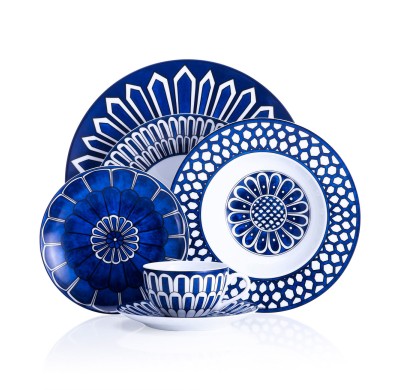
One of our favorites!! Bleus D’ailleurs tableware by Hermès
Image courtesy of Hermès
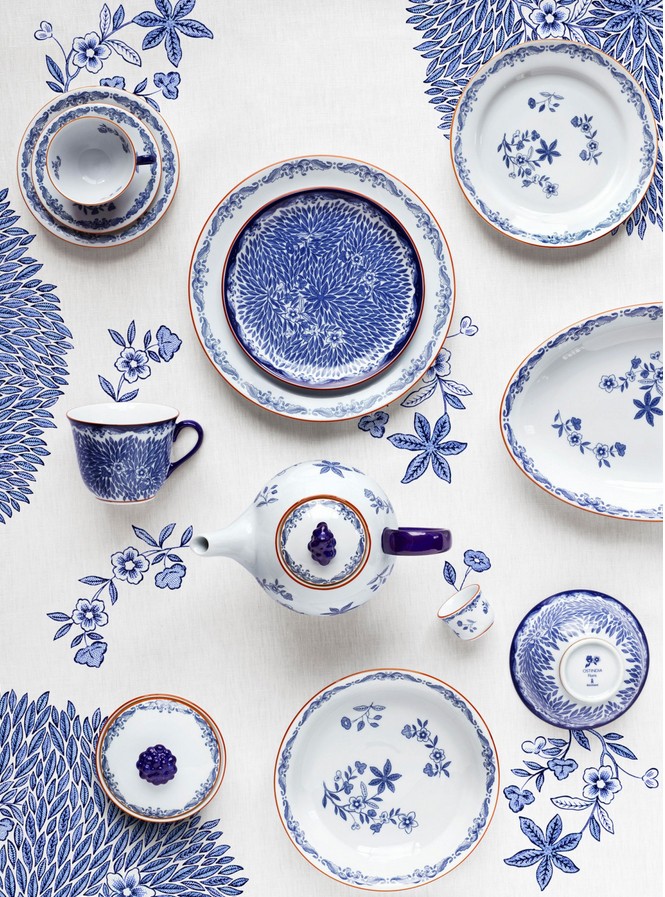
Caroline Slotte’s Ostindia Floris, 2012. Pattern design for Rörstrand, Sweden
Image courtesy of Caroline Slotte
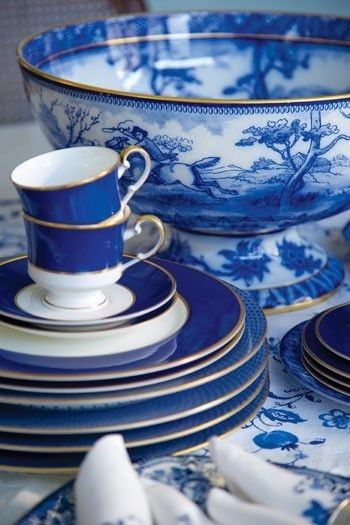
Image courtesy Pinterest – via gingham and watercolors
